Urban wildlife encompasses a range of species that have adapted to the unique conditions of urban environments. As cities expand and the effects of urbanization intensify, these animals find themselves in close quarters with human populations, leading to an intricate dance between wildlife and city dwellers.
The diversity of urban wildlife ranges from birds, mammals, reptiles, and insects to several plant species, all carving out a niche in the urban landscape. This juxtaposition challenges the conventional understanding of nature, often excluding human-altered landscapes.
Biodiversity in cities takes on a new form, featuring not only the more adaptable native species but also those considered invasive, posing additional challenges to conservation efforts.
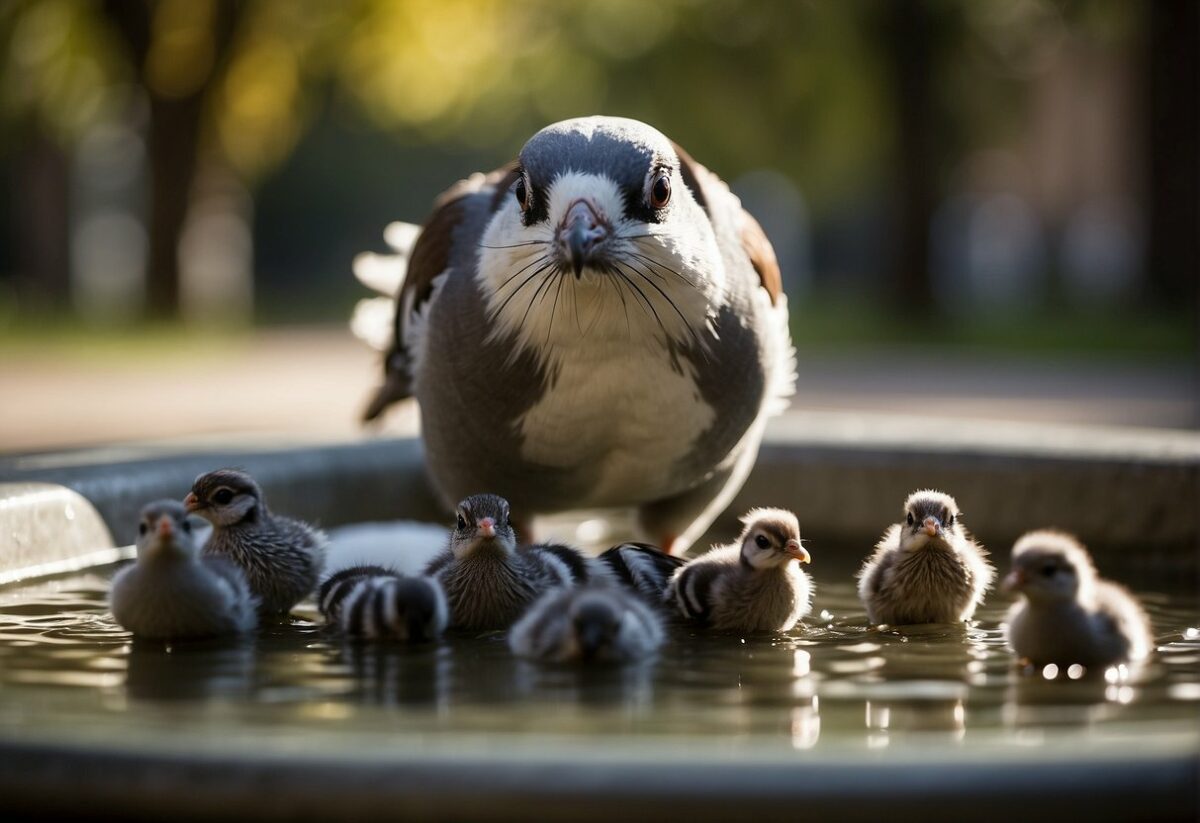
The adaptation of wildlife to urban areas is an ongoing process influenced by factors such as climate change and landscape connectivity.
Urban species exhibit behavioral changes and sometimes even evolutionary shifts as they navigate the concrete jungles. These adaptations may affect the biodiversity conservation strategies within our cities.
Science and research are crucial in understanding these phenomena, especially as the need for effective wildlife management becomes apparent to maintain biodiversity and the quality of life for urban residents.
Green spaces, such as public parks and gardens, play a vital role in providing natural habitats for many species and facilitating a connection with the natural world for humans in an otherwise built environment.
Understanding the ebb and flow of urban ecosystems is key to addressing challenges like light pollution and habitat loss while promoting biodiversity conservation. As we examine and appreciate the tenacity and resilience of urban wildlife, questions about coexistence and the value of integrating natural elements into urban planning come to the forefront.
Engaging with urban wildlife opens a window into the future of conservation and cities’ role in shaping the planet’s biodiversity.
Eurasian Magpies and Anti-Bird Spikes
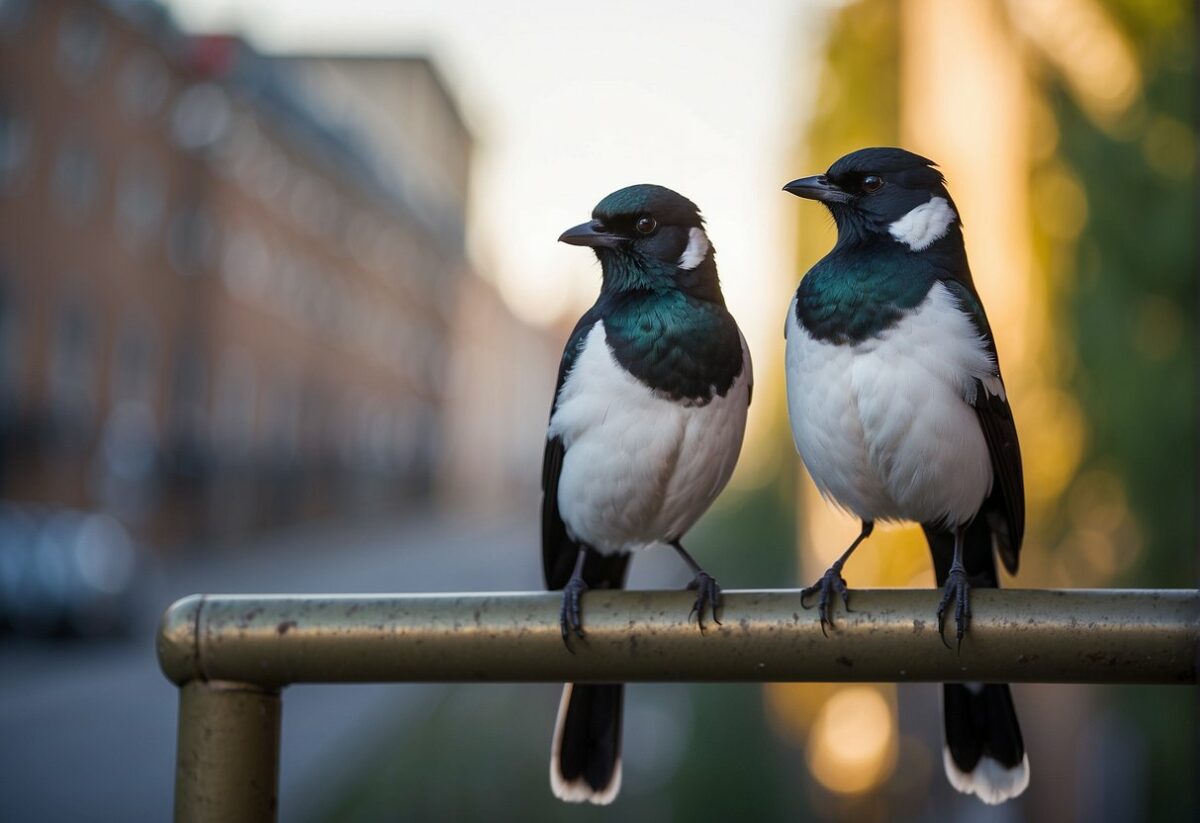
In the mosaic of urban landscapes, inventive avian species exemplify adaptation through their interactions with human-made objects. A case in point is the utilization of anti-bird spikes by Eurasian magpies, highlighting an engaging twist in the human-wildlife dynamic.
Anti-Bird Spike Use in Urban Areas
Anti-bird spikes are installed with the intention of deterring birds from perching on structures within urban areas. These metal or plastic spikes are often found atop buildings, signs, and ledges, forming a physical barrier against birds such as pigeons and house sparrows.
Nonetheless, this direct human action aimed at reducing human-wildlife conflict and protecting property from bird-related damage ironically provides materials for some avian species to exhibit remarkable behavioral adaptations.
- Materials Used: Metal or plastic
- Common Locations: Buildings, signs, and ledges
The Impact on Magpies and Other Bird Species
Eurasian magpies, known for their intelligence and problem-solving abilities, have responded to this challenge with innovation. These birds have been observed collecting detached anti-bird spikes and incorporating them into their nests.
This behavior demonstrates the magpies’ adaptability and raises questions about its effects on other urban wildlife and biodiversity.
- Behavior: Collecting and using anti-bird spikes for nest construction
- Effects on Biodiversity:
- Potential creation of more secure nests, possibly influencing predation dynamics
- Impact on other species that may compete for nesting sites or materials in green spaces and gardens
Incorporating man-made materials into nest building is not new for bird species. However, the specific use of anti-bird spikes by birds like Eurasian magpies is notable, as it symbolizes a full-circle moment in the human attempt to modify animal behavior.
This activity underscores the resilience and adaptability of urban wildlife facing habitat changes and conservation challenges in human-dominated environments.
See Related: Ingenious Bird Traps to Safely Redirect Unwanted Birds
City Birds Using Human Structures
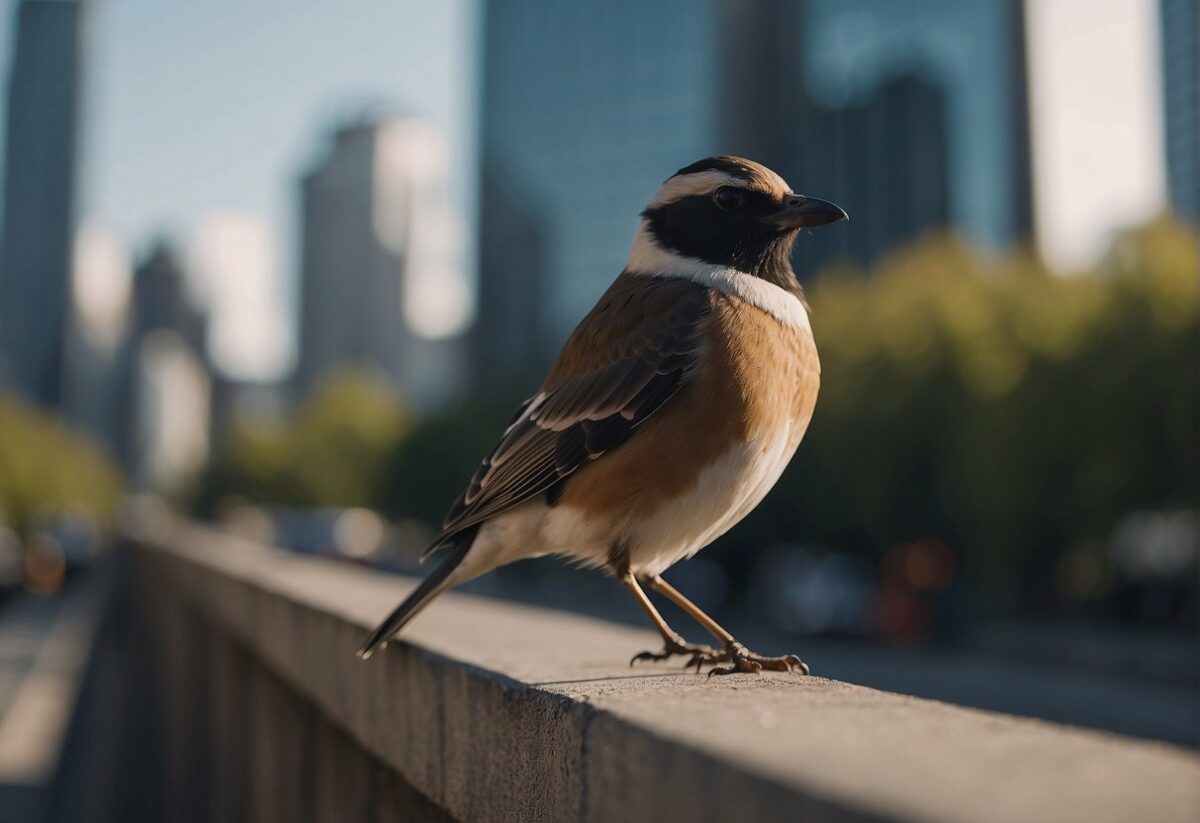
Bird species display remarkable adaptability as they incorporate urban structures into their survival strategies.
Nesting and Feeding Behaviors
Birds have transformed human structures into opportunities, exhibiting adaptive nesting and feeding behaviors that ensure survival in urban landscapes. They often choose unconventional spaces such as window ledges, building nooks, and chimneys as nesting sites, repurposing the urban architecture to their advantage.
- Nesting: Certain birds, like pigeons and sparrows, thrive in the cityscape by utilizing ledges, rooftops, and bridge underpasses to construct their nests. These locations provide protection from predators and harsh weather. Parks and other green spaces within urban areas also offer vital habitats for nesting, as they mimic the natural forests these birds would typically inhabit.
- Feeding: These birds exploit food sources resulting from human activities. Many have altered their behavior to forage in urban green spaces, parks, and even from waste produced by humans. This behavior points to their capacity to adapt to the urban food web and the abundance of resources present in the city.
Birds’ interactions with human-made environments reveal their behavioral flexibility and raise necessary questions about urban wildlife conservation. Adapting to urbanization, they challenge conservationists to reassess the conventional divide between natural and urban habitats.
The success of birds in cities could guide future conservation efforts, suggesting that coexistence and unified habitats may be the keystones to sustaining urban biodiversity.
Pirate Spiders’ Cunning Traps
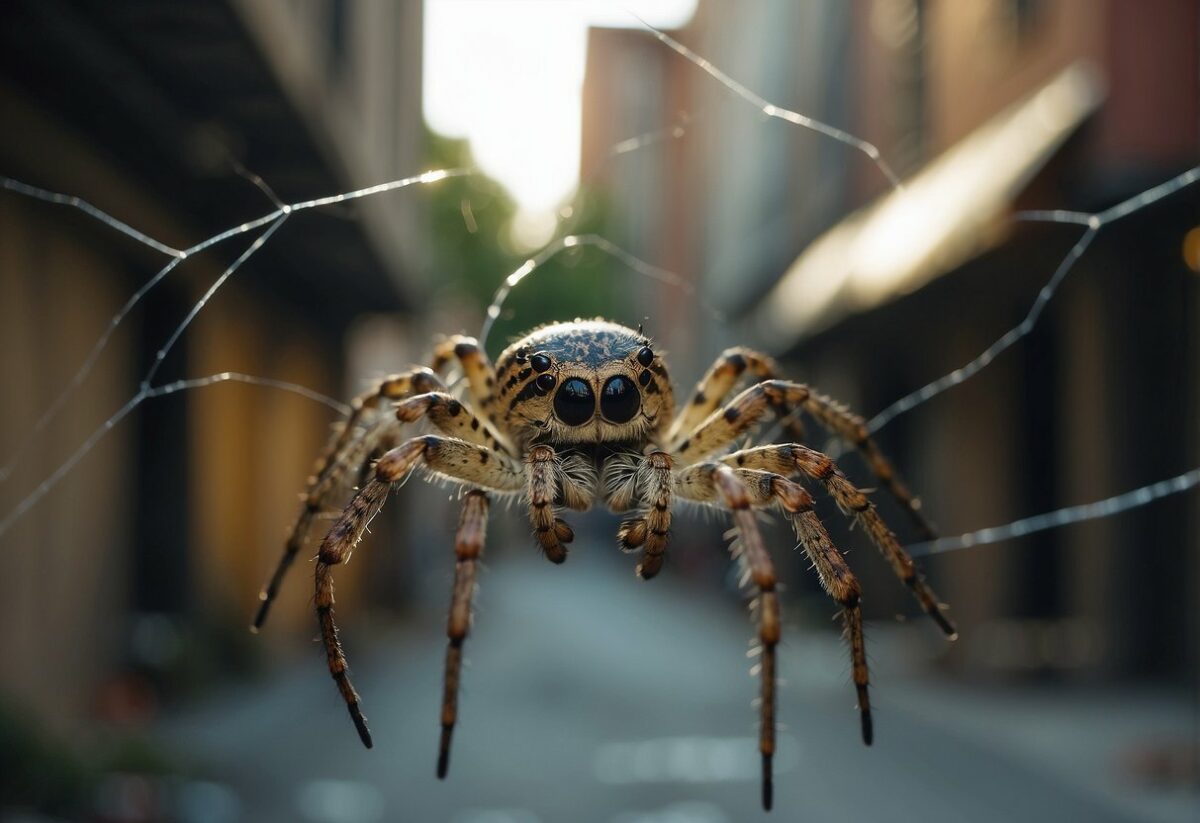
In cities, where every inch of space is at a premium, the remarkable adaptability of pirate spiders weaves a tale of ingenious survival and interaction within the web of urban biodiversity.
Adaptive Strategies in Urban Environments
Urban landscapes pose unique challenges to wildlife, particularly species like spiders that rely on specific strategies for hunting. Pirate spiders, a group of arachnids known for their distinctive feeding habits, thrive in these environments by exploiting the urban terrain.
Pirate spiders capitalize on the presence of other spiders’ webs to set their traps. Rather than constructing their own webs to catch prey, they use the silk lines of other spiders as scaffolding for their own survival.
By mimicking the struggle of a caught insect or vibrations of prey, they lure their unsuspecting victims. This behavior exemplifies adaptive strategies that allow certain spiders to become efficient urban predators.
The ingenuity of pirate spiders speaks volumes about their behavioral adaptation and predation techniques. Biodiversity in cities includes a range of urban species such as insects and arthropods—a bustling ecosystem where pirate spiders have carved out a niche. Their presence and success are a testament to urban wildlife’s ongoing evolution and adaptation.
Human encroachment on natural habitats has inadvertently created new terrains where animal behavior can be observed. These encounters influence urban wildlife management and conservation strategies.
By exploiting the artificial habitat of cityscapes, pirate spiders make themselves known to their prey and curious human observers, shedding light on the resilience and complexity of nature even amidst concrete and steel.
See Related: Are Jumping Spiders Friendly?
Adaptive Strategies of Urban Predators
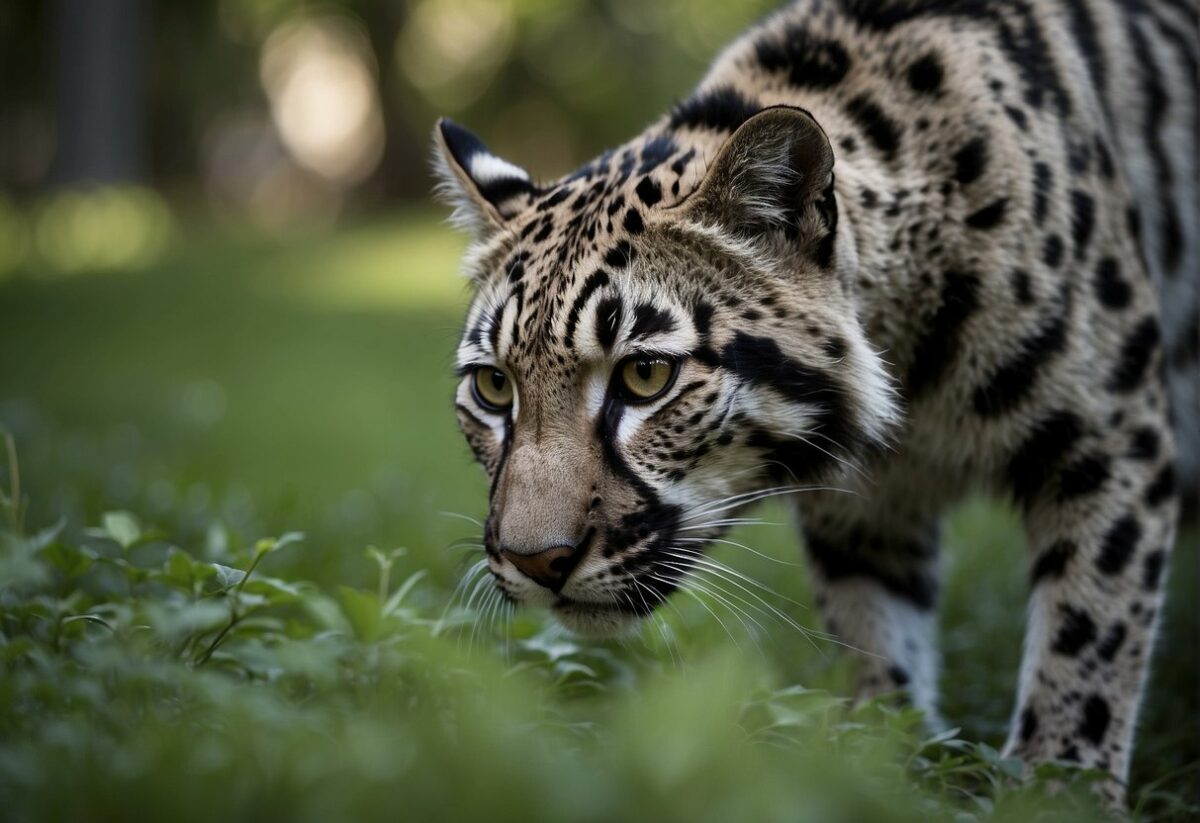
Urban predators have developed unique strategies to navigate the challenges of city life, reshaping their behaviors and interactions within urban ecosystems.
Behavioral Adaptations to Urban Challenges
Predators such as coyotes and raccoons exhibit remarkable behavioral adaptations in urban settings. These animals adjust their activity patterns, often becoming nocturnal, to avoid human encounters and maximize their use of available resources.
For instance, coyotes have been observed altering their hunting and denning behaviors, adapting to the fragmented habitats within cities. They utilize green spaces like parks and golf courses for hunting, yet may also rely on human-origin food sources, showcasing flexible dietary habits.
Urban raccoons, known for their dexterity and intelligence, take advantage of human refuse as a consistent food source, indicating a high level of adaptation to urban life.
Bobcats, while less common in urban areas, have been noted to adjust their territorial ranges to align with urban green spaces, maintaining a balance between their natural behaviors and the altered landscapes they inhabit.
Predator-Prey Dynamics in Cities
In urban ecosystems, the predator-prey relationship evolves as predators learn to exploit new food sources. The availability of prey, such as rodents, directly influences the behavior of urban predators like foxes and coyotes.
These urban predators have expanded their diets to include natural prey and human-associated foods, which can lead to increased predation on urban-adapted species like mice.
Adaptation to urban environments also includes navigating the risks associated with human presence. Human-wildlife interactions can lead to conflicts, informing conservation efforts to manage and mitigate these situations.
Understanding the complexities of urban predation helps foster biodiversity and the conservation of urban wildlife as part of integrated and responsible urban wildlife management.